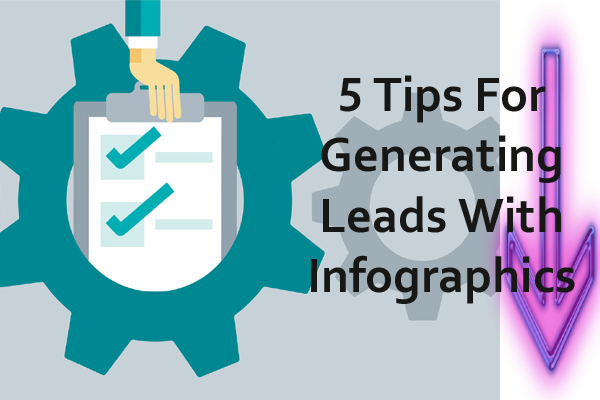5 Great Ideas For Lead Generation That Can Increase Conversion Rate And Also Are Easy-To-Use Apply

Marketing on the web is now guided by viewers’ choice and not by advertisers’ rule book. Today Internet users choose their experiences, actions and views. They’re actively avoiding ad content using click as a tool and they’ve lots of choices to determine what to see, what to download, what to buy and what to sign up.
What marketers need learning isn’t capturing customers’ attention but capturing it in such a way that viewers want to learn from the advertisements and offers. A smart lead generation strategy should include creating experiences and offers that fit into the needs and actions of the targeted audiences. Now it’s the consumers’ world.
Call-to-action is an important part of marketing but the old-style like “Sign-up here” is no longer attractive. And if you’re still recycling those old-school methods then you’re scaring viewers away by making white noise. CTA must match with the actions that are what viewers are doing. It’s called smart marketing.
Be creative in your approach, if you want to increase conversion rate together with generating more leads. Some old-methods of offering high quality content like ebooks and requesting for blog subscription still works but you should know how to match actions with offers. Also you need looking for more interactive ways to generate leads.
Luckily there are many ways to generate leads and increase conversion rate. B2B and B2C marketers can try these ways by matching actions with the offers. A little tweaking in the process is needed before a method is applied.
1) Put your calls-to-action in people’s natural eye path
Placement of call-to-actions could affect number of number of leads generated hence it’s necessary to determine correct placement of CTAs. It is time to think, test and optimize CTA placements to increase conversions. But some marketers are still following the old-school method of placing CTAs just above the fold.
Natural path eyes follow while reading a web page is from left to right. An eyetracking study found that people start reading from top left to right and then go on reading in in F-shaped pattern. If you draw the F-shaped, you will get a better understanding of how CTAs should be placed. The business name should figure on top left and the primary CTA should be on the top right. Then you can decide placement of other CTAs according to the pattern.
Keep the pattern in mind while placing CTAs on website and don’t hesitate in experimenting with creative ideas like switching CTAs to make a better sense of your business offer.
2) Use pop-up and slide-in forms the right way
Visitors find pop-ups discouraging because they’re distracting and also the pop-ups in no way enhance website presentation. But they do work, if presented in a useful, informative and above all non-disruptive manner. In reality, pop-ups can be crucial for inbound strategy. So, if you’re considering using pop-up on your site then go ahead but make sure that you offer something valuable and something that visitors find relevant with their search.
Consider what action would trigger the visitors to take an action, while determine pop-ups. Look at the way people read your web pages to find their interest and make pop-ups accordingly. For instance, a person reading a blog post will certainly scroll down the page. Here a slide-in box could be used. The box will appear when a certain percentage of the page is scrolled. Similarly a time-based-pop-up could be planned and presented after a visitor has spent some time on the web page.
3) Add anchor texts to old blog posts that align closely with your gated offers
Adding an end-of-post banner CTA to every blog post is a common practice but adding anchor texts could be more beneficial than the end-banner-CTAs. A study conducted on the anchor texts and end-banners revealed startling details. The study proved that more 90% of leads generating from blog posts come from anchor texts and less than 10% leads are generated by end-banners.
Anchor CTA text is a standalone line text in blog posts and it is linked to a specific landing page. The text is made to stand out from the body text of the blog with color and it is placed between paragraphs. But the most important thing to know is what makes the text so effective. It is relevance with search and the text matter that make anchor text effective. Someone searching information on Press Release would be interested in using free press release templates. So, an anchor text related to free templates will be beneficial between the body-text of the blog.
4) Support the launch of a new campaign with a launch post and other blog posts on related topics
Start new marketing campaigns by introducing the business promoted through a launch post. It’s a great way to update the existing subscribers about new offers and also it’s an opportunity to add more subscribers to the blog. The launch post should give brief intro about the business and supplemental posts could be made to describe the business at great length.
5) Use social media strategically for lead generation
Take advantage of social media for lead generation by promoting the new blog posts on Facebook and LinkedIn, Twitter and other social networks. Keep your social media visitors updated about new posts by regular posting make sure that the links in the social media posts take the viewers to the connected landing pages.
Conclusion
Who’re the decision makers in web marketing? Is it search engine that determines success of a market campaign or marketers? The answer is customers or visitors. Today viewers decide what to see and what to discard. They’ve got choice and also they’ve got the tools to reveal their preferences. The time has come when marketers should recognize value of viewers and present content that interests visitors. There are many ways in which content can be made more interesting. Marketers have to learn new ways of lead generation through interesting content like CTA placements, pop-ups and anchor texts.



